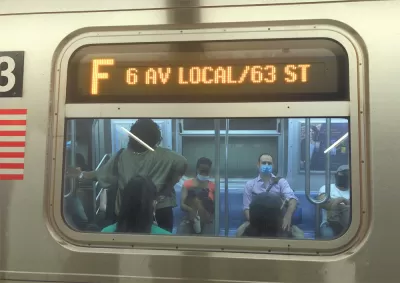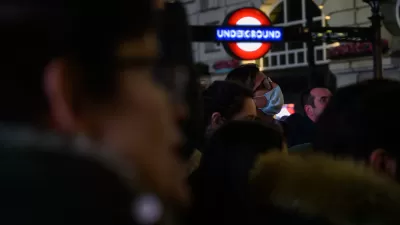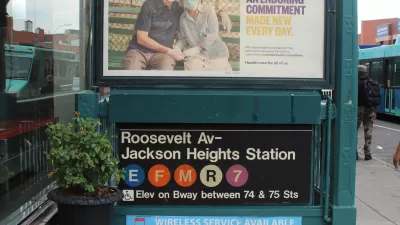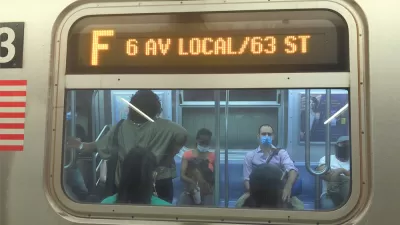Almost all heavy rail transit stations lost riders in 2020, but some stations lost far fewer riders than others. The data reveals lessons for transit planning beyond the end of the pandemic (whenever that happens).

Yonah Freemark shares the results of new analysis about how the pandemic has altered ridership patterns on U.S. heavy rail transit systems (i.e., the subway and el trains found in some U.S. cities—New York, Chicago, and Washington, D.C., and the San Francisco Bay Area in this study).
Here's how Freemark summarizes the findings of this analysis:
Though almost every station I studied saw fewer riders in 2020 compared with 2019, changes varied tremendously based on local characteristics, as neighborhoods with large Black populations, many households with low incomes, and more residents with lower levels of education lost fewer riders than other communities. Stations in employment-dense areas also lost considerably more riders than those in residential zones—likely because white collar workers with employment in downtowns were disproportionately able to work from home.
The source article linked below provides a lot more detail on each of the major findings. Freemark suggests that the ridership data should inform service choices by transit agencies that cater to the core riders that continued riding throughout the pandemic.

Maui's Vacation Rental Debate Turns Ugly
Verbal attacks, misinformation campaigns and fistfights plague a high-stakes debate to convert thousands of vacation rentals into long-term housing.

Planetizen Federal Action Tracker
A weekly monitor of how Trump’s orders and actions are impacting planners and planning in America.

San Francisco Suspends Traffic Calming Amidst Record Deaths
Citing “a challenging fiscal landscape,” the city will cease the program on the heels of 42 traffic deaths, including 24 pedestrians.

Defunct Pittsburgh Power Plant to Become Residential Tower
A decommissioned steam heat plant will be redeveloped into almost 100 affordable housing units.

Trump Prompts Restructuring of Transportation Research Board in “Unprecedented Overreach”
The TRB has eliminated more than half of its committees including those focused on climate, equity, and cities.

Amtrak Rolls Out New Orleans to Alabama “Mardi Gras” Train
The new service will operate morning and evening departures between Mobile and New Orleans.
Urban Design for Planners 1: Software Tools
This six-course series explores essential urban design concepts using open source software and equips planners with the tools they need to participate fully in the urban design process.
Planning for Universal Design
Learn the tools for implementing Universal Design in planning regulations.
Heyer Gruel & Associates PA
JM Goldson LLC
Custer County Colorado
City of Camden Redevelopment Agency
City of Astoria
Transportation Research & Education Center (TREC) at Portland State University
Jefferson Parish Government
Camden Redevelopment Agency
City of Claremont





























